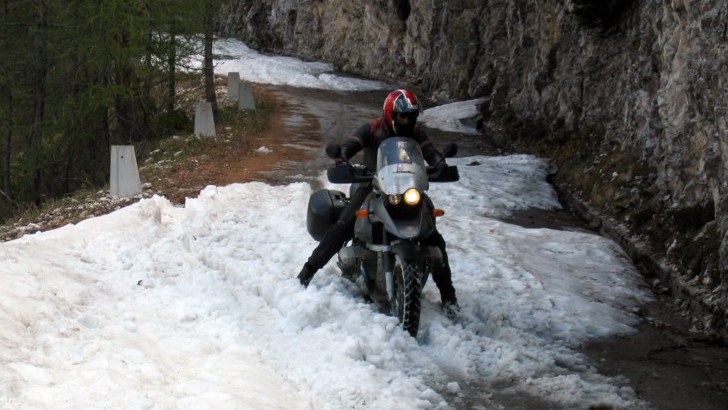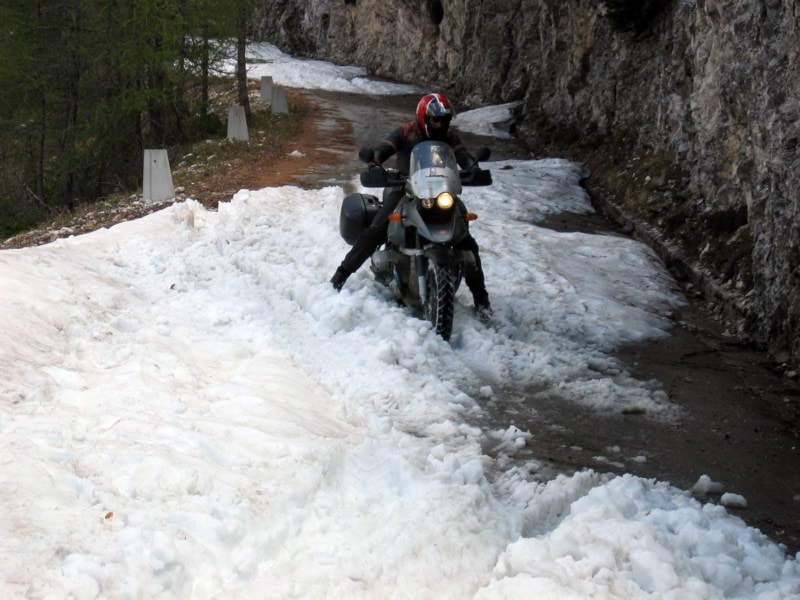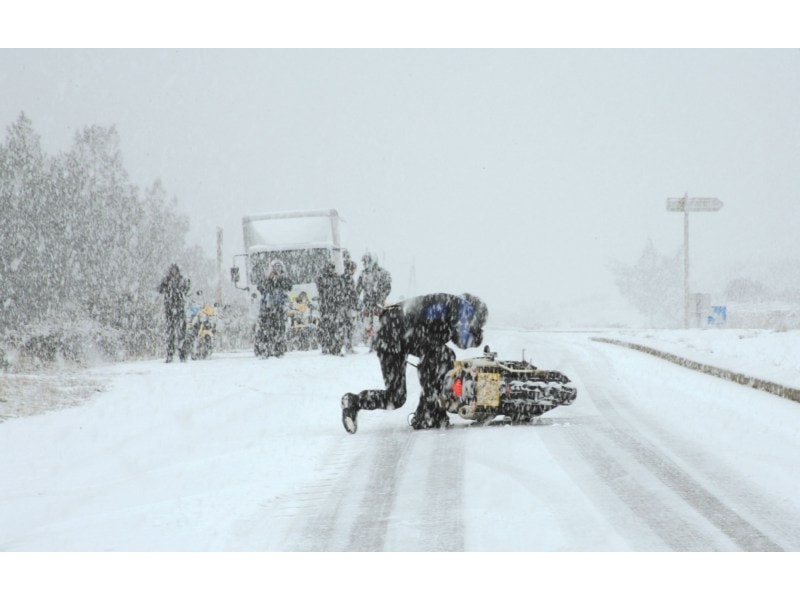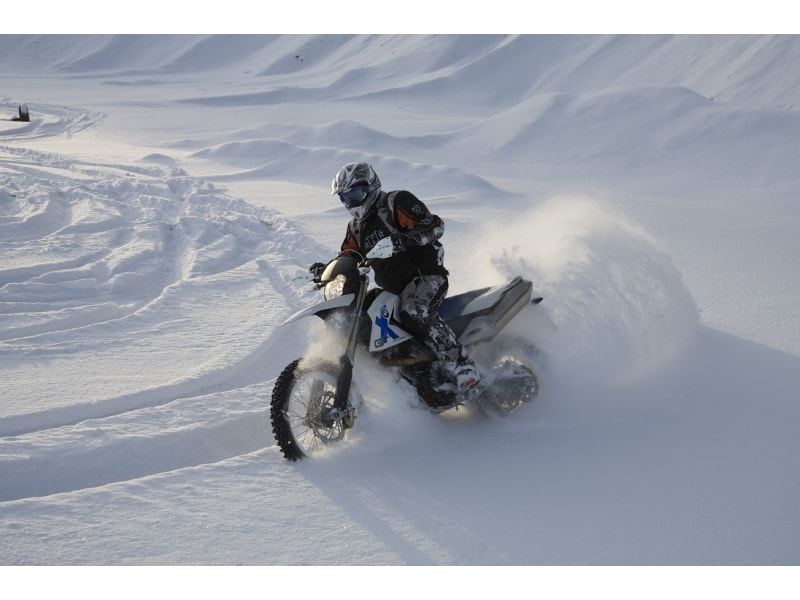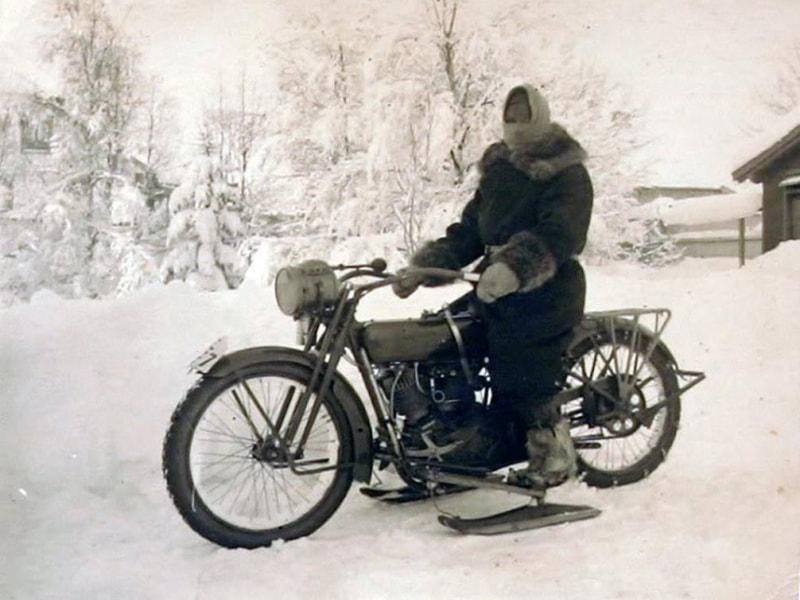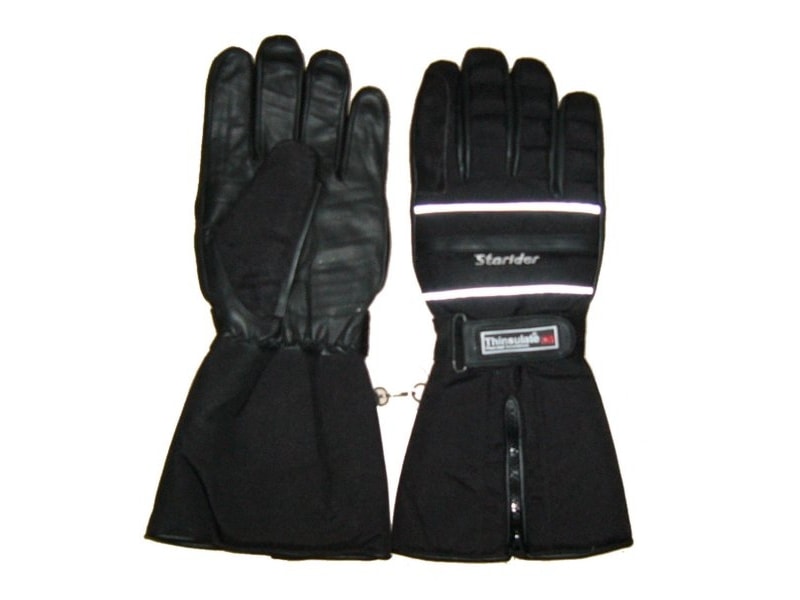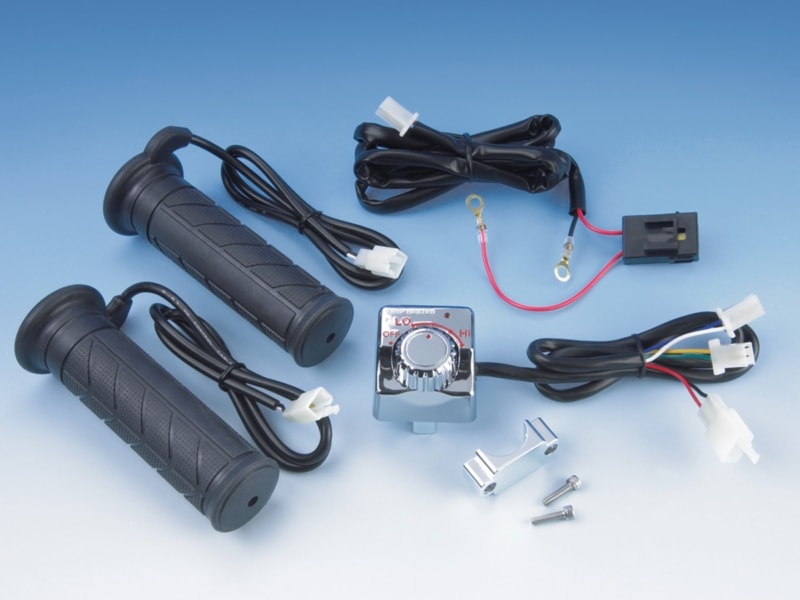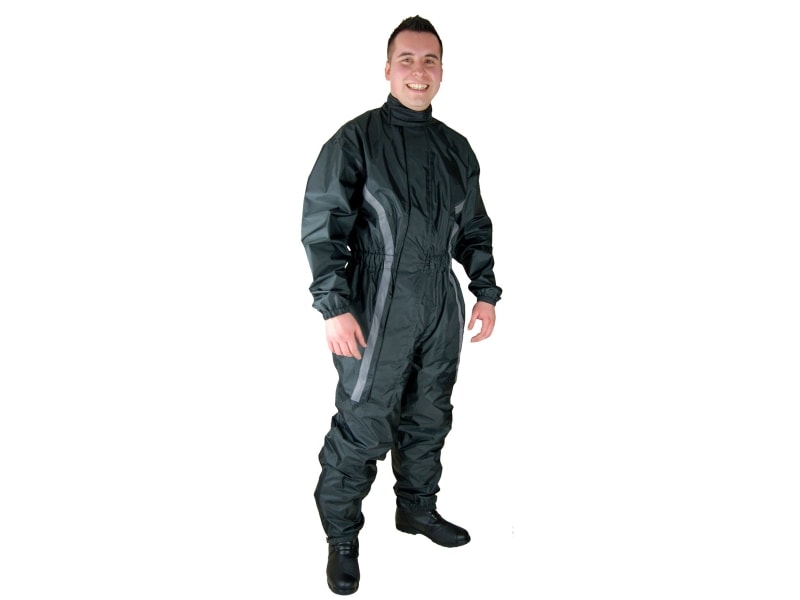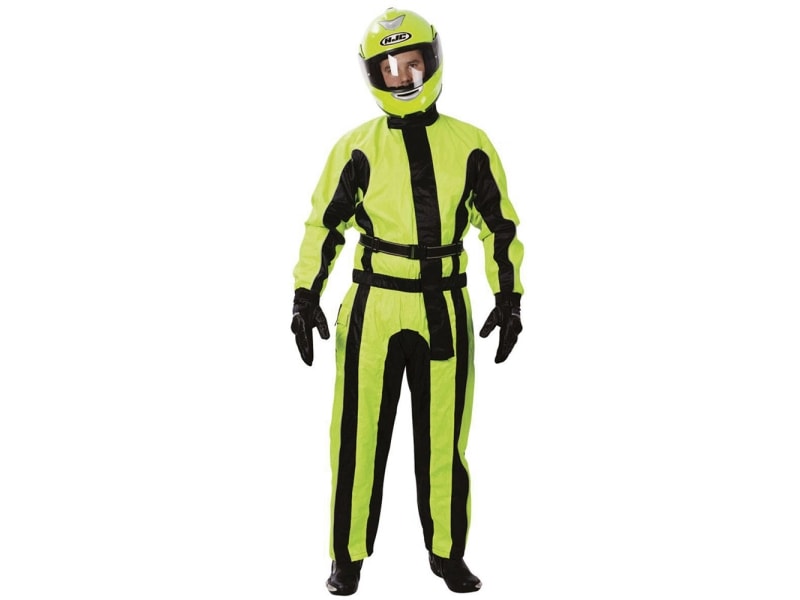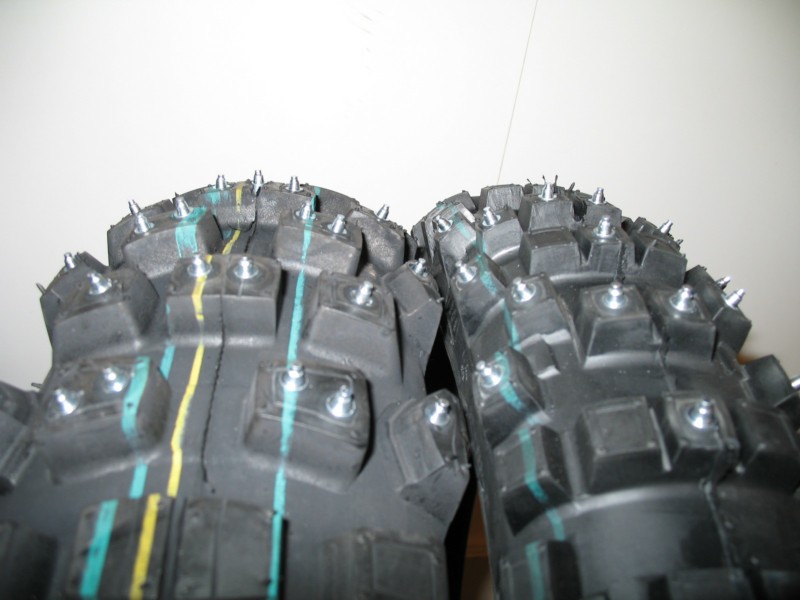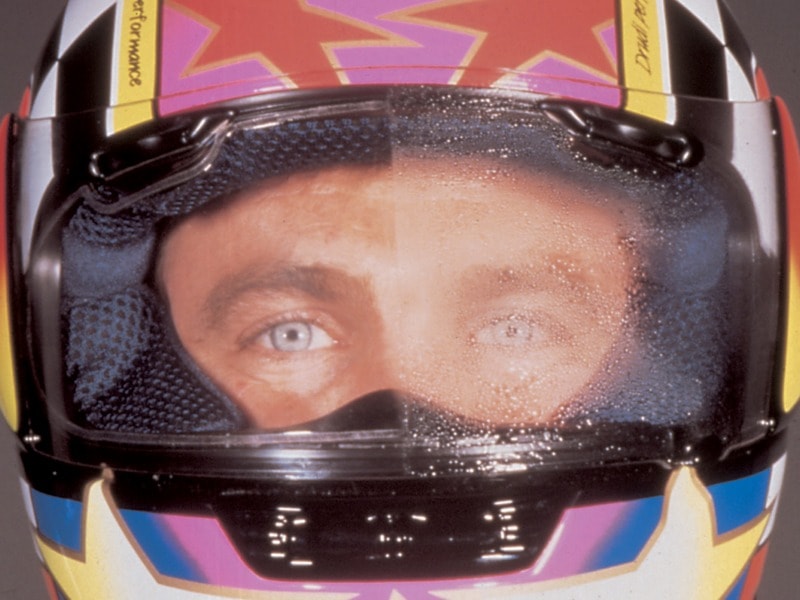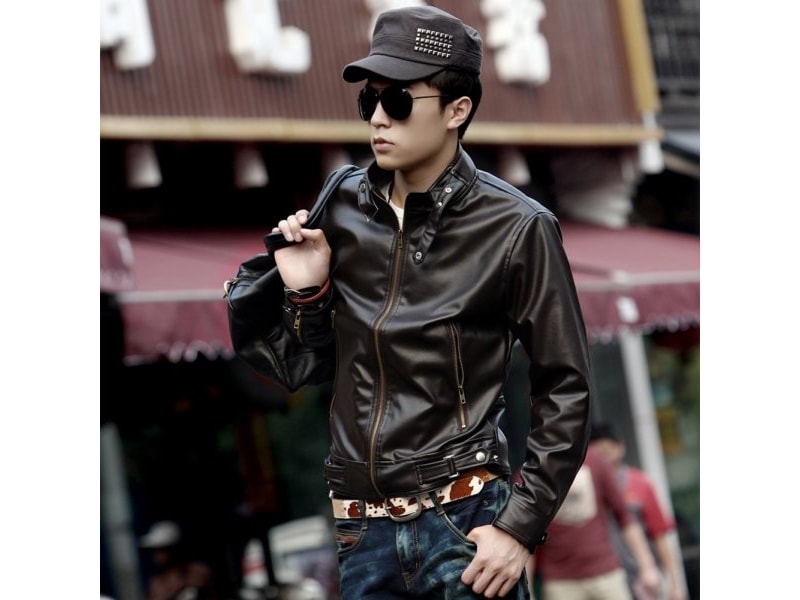Some guys on this planet are really lucky, as they can ride their motorcycles 12 months a year and never have to worry as they hear about things like "December", "winter prepping" or "ice screws". Well, unfortunately not everyone gets to live in such biker-friendly areas... and some get even less riding time around the year.
This week's question deals with riding in cold weather... and when I say cold weather, it doesn't mean 10 degrees Celsius, even though by the time temperature reaches this figure some might have already stowed their bikes away. I mean winter riding, snow or not, commuting and similar serious things.
There is no right and wrong here, obviously: what someone might see as the perfect time for a longer ride may be a “no way I'm riding a bike in this weather” decision for others, and telling the degrees of rationality between the two is really impossible.
Now, there is a big difference between some rider who is simply too lazy to wear a rain suit and would thus refuse a ride in the cloudy afternoon and the question whether the electric heat vest will be enough.
Motorcyclists who really love riding as much as they can, whether for commuting or for fun would try to prolong the season, but is it really worth the pain?
Some of the guys replied that going back to driving a car to work is somewhat depressing, while others said that public transportation takes too long and would rather endure a little cold. However, things got pretty clear (and sometimes a bit sad) as snow and ice came into discussion.
This time most people admitted that once the snowing starts, followed by patches of ice and the like, bikes are no longer fun and come with a ton of risks.
Funny thing that pretty much all of these guys also admitted that they would try and ride winter-equipped bikes on a frozen lake or try all sorts of funny things in the snow... all reducing in the end to having fun during the weekends.
Summing up what I got in terms of winter riding pros was rather easy, as nobody seemed eager to crash due to ice patches on public roads, but were interested in some closed road/ off-road adventure.
However, as September's (still) warm days slowly fade away, so does the heat of the day. No more riding while wearing a vest, like in mid-July... jackets and thermal liners are everyday clothing and still, as winter approaches, things grow even colder.
And cold is at least as fierce an enemy for the rider as reckless drivers. Since cold is also insidious, it may be safer to say that you can break or swerve to avoid crashing into a guy you see running the red light, but cold can't be seen. And by the time you feel it, it may already be a bit too late.
Cold, and hypothermia can be very dangerous, proving to be fatal in extreme cases. Heat loss in the leg and hand areas leads to numb limbs and slow reaction times, dramatically reducing a rider's capability to take action in due time, or making his/ her actions imprecise.
What's even worse when it comes to cold is the fact that once one starts shivering, there's little he or she can do to warm up again, save for adding some clothing or stopping in a warm place. Even when riding in the spring or autumn, it's better to have some extra warm clothes with you and never need them, than wishing you had some and having none.
Most of the motorcycle riders and their passengers I spoke with admitted that the cold during winter is just as important a deterrent as ice and slippery roads are. And yes, I also ran into guys who claimed they are not willing to ride at all until the weather is nice and warm, as they really hated cold and all.
1. Snow and ice makes riding extremely hard and dangerous. Bikes can be equipped with special tires, but they're illegal on certain roads. Chains can also be used, but once more, riding on clear asphalt is insane.
2. Cold makes everything uncomfortable and having to ride a long period of time can lead to hypothermia. At the same time, numb extremities equal poor steering, while the discomfort also wrecks focus and awareness.
3. Riding gear and all the extra clothing may easily reduce the freedom of movement, which is bad for operating a motorcycle.
4. Every piece of clothing has to be in top condition. Leaky boots or non-waterproof gloves don't mix well with cold and especially with sleet or snow.
5. Corrosion affects cars and bikes alike, and the road treatment solutions will attack your motorcycle. If you ride a rat bike, this may be of lesser importance, but very few riders are willing to see their vehicles rust.
6. Finally, there's light conditions. Days are a lot shorter during the winter and adding poor visibility to all the above makes things almost a nightmare. If you hate riding at night, then winter is just the wrong season for you.
This list, far from being a comprehensive one, should be enough to prove that if one can, avoiding riding during the winter is a good idea. However, if one can't resist the temptation and wants to try going hardcore, here are some tips for making things safer and healthier.
Layers are good. One of the most important ones is to wear layered clothing. Multiple layers trap air between them and this air will be heated by the body. While the layers closest to the skin should be able to also wick away excessive moisture, it's only natural that the outer layer of clothing should be also able to preserve the “atmosphere”.
However, make sure all the clothing you wear does not restrict your movement: it's no use being all “sealed up” if you cannot get on the bike, let alone steer it. Thicker clothes do not equal warm clothes all the time.
Watch for gaps. No matter how well you're dressed, there will still be places where the heat escapes and cold can enter. The space between the jacket and trousers, that between gloves and sleeves, and the neck area are the most “prone to leaks”. Make sure you interleave your clothing, wear some gauntlet-style gloves (even with a microfiber liner), and add in a neck warmer or balaclava.
Know your weak spots. Some guys have a really poor peripheral circulation, and this means their feet and hands, even nose and ears tend to get cold quite easily, even during warmer days. If you're such a person, winter riding is definitely not for you.
If you do plan to ride your bike in really cold weather, you should get winter gloves, thermal socks and warm boots. It doesn't matter if your feet felt so hot in your summer boots – they will freeze in the winter air. And you don't want this.
Defense. One of the best ways to avoid the chill is to reduce the amount of cold air hitting your clothes, and that's where a tall windscreen comes in quite handy. Riding behind a windshield makes a huge difference, as a lot of the air is deflected around you and will not drain heat from you.
At the same time, wearing a one-piece overall suit (like a rain one) could also shield you from the wind, adding an extra layer of protection.
Go electric or chemical. Electric heating elements are always a great idea, and most guys who are into touring will vouch for this. Heated grips and heated seat pads keep your hands and rear warm, or at least warmer than they'd be in their absence.
If you plan to take longer rides, getting an electric vest can be great, but gel warming pads can do a very good job, too. In case you add multiple electric heating elements to the bike, you should make sure the generator and electric system can run them properly.
See and be seen. Even if you wear a balaclava and your helmet has a breath guard, moisture will condensate on your visor and impede your vision. Even more, it can also freeze there, as impossible as it seems. Installing a simple system, such as the Pinlock lens, spares you of the hassle.
Loud colors, fluorescent and reflective elements are also welcome, as during the winter, light is also dimmer. Signaling earlier is also a very good precaution, letting the others in traffic know about your intentions.
Tires, and bike prep. Finally, having your bike in good working condition, with good tires, thinner oil and even with an anti-corrosion treatment in some places will hopefully make your winter riding less dangerous and less uncomfortable, if not even more pleasant.
Do I really have to?
The first reasonable question coming to mind is whether one really has to ride during winter? Some of us are addicts with different degrees of “affliction,” but even the most dedicated and passionate riders should find a decent and sincere answer to this question.There is no right and wrong here, obviously: what someone might see as the perfect time for a longer ride may be a “no way I'm riding a bike in this weather” decision for others, and telling the degrees of rationality between the two is really impossible.
Now, there is a big difference between some rider who is simply too lazy to wear a rain suit and would thus refuse a ride in the cloudy afternoon and the question whether the electric heat vest will be enough.
Motorcyclists who really love riding as much as they can, whether for commuting or for fun would try to prolong the season, but is it really worth the pain?
Fun, fun, fun
I've asked around about riding during winter and its sometimes inclement, ever-changing weather and the answer I receiver most of the times was that riding is fun. This, for a biker, is a bit tautological, of course, so detailing was needed.Some of the guys replied that going back to driving a car to work is somewhat depressing, while others said that public transportation takes too long and would rather endure a little cold. However, things got pretty clear (and sometimes a bit sad) as snow and ice came into discussion.
This time most people admitted that once the snowing starts, followed by patches of ice and the like, bikes are no longer fun and come with a ton of risks.
Funny thing that pretty much all of these guys also admitted that they would try and ride winter-equipped bikes on a frozen lake or try all sorts of funny things in the snow... all reducing in the end to having fun during the weekends.
Summing up what I got in terms of winter riding pros was rather easy, as nobody seemed eager to crash due to ice patches on public roads, but were interested in some closed road/ off-road adventure.
Archenemy: cold
Cold or drafts affect riders even during the warm season, and it's been more than once when we all met people catching a cold in mid-summer, at least partially related to riding a bike.However, as September's (still) warm days slowly fade away, so does the heat of the day. No more riding while wearing a vest, like in mid-July... jackets and thermal liners are everyday clothing and still, as winter approaches, things grow even colder.
And cold is at least as fierce an enemy for the rider as reckless drivers. Since cold is also insidious, it may be safer to say that you can break or swerve to avoid crashing into a guy you see running the red light, but cold can't be seen. And by the time you feel it, it may already be a bit too late.
Cold, and hypothermia can be very dangerous, proving to be fatal in extreme cases. Heat loss in the leg and hand areas leads to numb limbs and slow reaction times, dramatically reducing a rider's capability to take action in due time, or making his/ her actions imprecise.
What's even worse when it comes to cold is the fact that once one starts shivering, there's little he or she can do to warm up again, save for adding some clothing or stopping in a warm place. Even when riding in the spring or autumn, it's better to have some extra warm clothes with you and never need them, than wishing you had some and having none.
Most of the motorcycle riders and their passengers I spoke with admitted that the cold during winter is just as important a deterrent as ice and slippery roads are. And yes, I also ran into guys who claimed they are not willing to ride at all until the weather is nice and warm, as they really hated cold and all.
Cons pile-up
Looking back to all those discussions, I'd say that winter-riding on a somewhat constant basis has no pros at all. On the other hand, given the nature of the two-wheeled transportation, it seems like the sum of cons is huge, rounding up the most common ones, we have:1. Snow and ice makes riding extremely hard and dangerous. Bikes can be equipped with special tires, but they're illegal on certain roads. Chains can also be used, but once more, riding on clear asphalt is insane.
2. Cold makes everything uncomfortable and having to ride a long period of time can lead to hypothermia. At the same time, numb extremities equal poor steering, while the discomfort also wrecks focus and awareness.
3. Riding gear and all the extra clothing may easily reduce the freedom of movement, which is bad for operating a motorcycle.
4. Every piece of clothing has to be in top condition. Leaky boots or non-waterproof gloves don't mix well with cold and especially with sleet or snow.
5. Corrosion affects cars and bikes alike, and the road treatment solutions will attack your motorcycle. If you ride a rat bike, this may be of lesser importance, but very few riders are willing to see their vehicles rust.
6. Finally, there's light conditions. Days are a lot shorter during the winter and adding poor visibility to all the above makes things almost a nightmare. If you hate riding at night, then winter is just the wrong season for you.
This list, far from being a comprehensive one, should be enough to prove that if one can, avoiding riding during the winter is a good idea. However, if one can't resist the temptation and wants to try going hardcore, here are some tips for making things safer and healthier.
So what can we do?
Maintaining the body heat is the main challenge, and there are several ways to try and keep things warmLayers are good. One of the most important ones is to wear layered clothing. Multiple layers trap air between them and this air will be heated by the body. While the layers closest to the skin should be able to also wick away excessive moisture, it's only natural that the outer layer of clothing should be also able to preserve the “atmosphere”.
However, make sure all the clothing you wear does not restrict your movement: it's no use being all “sealed up” if you cannot get on the bike, let alone steer it. Thicker clothes do not equal warm clothes all the time.
Watch for gaps. No matter how well you're dressed, there will still be places where the heat escapes and cold can enter. The space between the jacket and trousers, that between gloves and sleeves, and the neck area are the most “prone to leaks”. Make sure you interleave your clothing, wear some gauntlet-style gloves (even with a microfiber liner), and add in a neck warmer or balaclava.
Know your weak spots. Some guys have a really poor peripheral circulation, and this means their feet and hands, even nose and ears tend to get cold quite easily, even during warmer days. If you're such a person, winter riding is definitely not for you.
If you do plan to ride your bike in really cold weather, you should get winter gloves, thermal socks and warm boots. It doesn't matter if your feet felt so hot in your summer boots – they will freeze in the winter air. And you don't want this.
Defense. One of the best ways to avoid the chill is to reduce the amount of cold air hitting your clothes, and that's where a tall windscreen comes in quite handy. Riding behind a windshield makes a huge difference, as a lot of the air is deflected around you and will not drain heat from you.
At the same time, wearing a one-piece overall suit (like a rain one) could also shield you from the wind, adding an extra layer of protection.
Go electric or chemical. Electric heating elements are always a great idea, and most guys who are into touring will vouch for this. Heated grips and heated seat pads keep your hands and rear warm, or at least warmer than they'd be in their absence.
If you plan to take longer rides, getting an electric vest can be great, but gel warming pads can do a very good job, too. In case you add multiple electric heating elements to the bike, you should make sure the generator and electric system can run them properly.
See and be seen. Even if you wear a balaclava and your helmet has a breath guard, moisture will condensate on your visor and impede your vision. Even more, it can also freeze there, as impossible as it seems. Installing a simple system, such as the Pinlock lens, spares you of the hassle.
Loud colors, fluorescent and reflective elements are also welcome, as during the winter, light is also dimmer. Signaling earlier is also a very good precaution, letting the others in traffic know about your intentions.
Tires, and bike prep. Finally, having your bike in good working condition, with good tires, thinner oil and even with an anti-corrosion treatment in some places will hopefully make your winter riding less dangerous and less uncomfortable, if not even more pleasant.
